When is the best time to visit Japan?
The information on this page is based on historical averages and may not reflect current conditions. Please check with local authorities for the latest travel advice.
Read moreThe best time to visit Japan is from late March to early April and from September to November. During spring, the country is covered in swathes of cherry blossom trees, while autumn chooses a new palette as tranquil gardens and parks turn a shade of red, orange and gold. As well as the beautiful foliage, the weather is mild during these periods and pleasant for strolling around the sights.
In major cities like Tokyo, Kyoto and Osaka, your best bet for immersing yourself in the pink tint of sakura season is at the start of April. It’s not an exact science but generally, the milder the climate, the earlier the blossoms open – so bear this in mind when planning your trip. As well as exploring Buddhist temples and Shinto shrines, public bathhouses (sento) and hot-spring baths (onsen) are one of the most therapeutic ways to immerse yourself in the local culture. Japan is also renowned for its flavourful cuisine, so be sure to fill your plate with sushi, udon noodles and tofu between soaking up the sights.
More about the best time to visit Japan
Monthly weather and travel tips for Japan
Japan in January is a relatively chilly affair with temperatures dropping to around 10°C and many parts of the country experiencing snowfall. But between winter festivals, hot springs and skiing, there are plenty of ways to keep warm. Lower crowds combined with consistently impressive sights make it well worth braving the crisp weather in big cities like Tokyo and Kyoto but bear in mind that a lot of businesses close over the New Year period. If you’re adamant about leaving your coat and umbrella at home, the Okinawa Islands in the southwest enjoy semi-tropical weather all year round, with temperatures of up to 18°C.
The Shōgatsu (New Year) festival kicks off on 1 January when everyone unites to wish good health and prosperity upon one another. Head to a snow art festival to observe beautiful ice sculptures of mythological creatures which are illuminated at night. As January is the coldest month of the year, many also take to the slopes to enjoy skiing or snowboarding, with Hakuba and Niseko two of the most popular resorts.
7°C
High
1°C
Low
21 days
Rainfall
As the cold snap continues into February, ski season reaches its peak as blankets of thick, powdery snow are met with more sunshine and slightly warmer temperatures than January. Although the weather is usually sunny and dry, you should pack plenty of warm clothes to cope with the cooler temperatures which average out at around 10°C during the day and 2°C in the evening. There are limited crowds at this time of year, making it a great time to explore the main sights with shorter queues.
February’s highlights include Sapporo’s annual snow festival, attracting two million visitors with its ice sculpting competition, a skating rink and snow slides for kids. Towards the end of the month, plum blossoms begin to appear to signal the start of spring. Head to famous viewing points like Kairaku-en in Mito or Tokyo’s Hanegi Park along with many other gardens and shrines to appreciate the vibrant shades of these colourful trees.
8°C
High
1°C
Low
19 days
Rainfall
March’s main draw is undoubtedly the tradition of hanami, which literally means to look at flowers. It won’t take you long to see what all the fuss is about, with the sakura trees popping up in parks, along streets and riversides. The cherry blossom colours begin to peek through at the beginning of March as the reddish hues spread from south to north, but expect a full-on pink parade as the month draws to a close. It's worth checking the cherry blossom forecasts ahead of time if you want to see the country at its most colourful. These will be available between January and February and will be updated weekly throughout the season.
Anime is a big deal in Japan, so if you’re in Tokyo at this time, it’s worth checking out AnimeJapan – the world’s largest festival devoted to this popular animation style. Daytime temperatures average out at an agreeable 13°C, meaning it’s one of the most enjoyable times to visit the country. If you’re going to be out the whole day, you should pack a relatively warm coat or jumper to wrap up in during the evenings when it gets a bit fresher.
12°C
High
5°C
Low
20 days
Rainfall
A surge of warmer weather throughout the country means April is the ideal time to visit any part of Japan. Cherry blossom season hits its stride in cities like Tokyo and Kyoto, and southern Okinawa’s beach resorts are open for business. While temperatures average out to 19°C during the day, you’ll still want to wear something warmer in the evening when it can get quite chilly.
Die-hard winter sports enthusiasts can still hit the slopes in some resorts, like Niseko which caters for spring skiing. If you’re keen to appreciate the beauty of cherry blossom season in full swing, Tokyo, Osaka and Kyoto offer some of the best hanami (blossom viewing) as flushes of pink cover streets, parks and shrines. However, there are thousands of spots across the country to observe sakura (cherry trees) in bloom. Beware that crowds will swell during Golden Week (29th April to early May) when a number of Japanese holidays take place.
18°C
High
10°C
Low
16 days
Rainfall
As Golden Week festivities spill over into the first week of May, cherry blossoms are at their pinkish peak in the northern region of Hokkaido and average temperatures creep up to a pleasant 23°C. Many Japanese people take the week off work so expect public transport and parks to be busy.
Once the crowds have dispersed, you can enjoy a relatively roomy exploration around main cities like Tokyo, Osaka and Kyoto and enjoy the t-shirt worthy weather. With ski season officially over, hiking is the best way to keep active, with Hokkaido’s mountains and various national parks the best spots for a scenic stroll. Tokyo is filled with festivals during May, including the wild weekend-long Sanja Matsuri where around 100 portable shrines are paraded through the streets. The tail end of the month sees the hugely popular Roppongi Art Night put on its weekend of outdoor installations and live performances, turning the area into one big open-air gallery.
23°C
High
15°C
Low
16 days
Rainfall
By late June, the rainy season (‘tsuyu’) affects most of Japan so packing a waterproof coat and umbrella is strongly advised. The northernmost islands of Hokkaido are the one part of Japan which escape the showers, enjoying sunny weather for most of the month. Down south it will be fairly hot and humid, with rain falling in sporadic tropical downpours and temperatures around 26°C.
Despite the wet weather in central and southern Japan, there’s still plenty to see and do in the big cities. It’s an ideal time to make use of the traditional hot springs known as onsen, where you can soak in geothermally heated waters rich in minerals. There are also plenty of free festivals going on across the country, such as Hyakumangoku Matsuri in Kanazawa where you can observe traditional 16th-century costumes and folk dancing.
26°C
High
19°C
Low
18 days
Rainfall
By July, sunny days are frequent in the north and south, making it perfect for mountain excursions or snorkelling around the Okinawa Islands. Honshu and central Japan are a soggier affair as the rainy season continues. Although it can get very hot and humid in most parts of the country, you can find cooler weather in the northern regions like Hokkaido where temperatures average out to 21°C.
Climbing season officially begins in July, when adventurous types tackle Mount Fuji – the country’s highest peak at 3,776 metres. If you’re around on the last weekend of July, you can catch some of the biggest music acts at Fuji Rock Festival. It’s also the time for popular summer festivals like Gion Matsuri in Kyoto, Tenjin Matsuri in Osaka and hundreds of ‘hanabi taikai’ (fireworks shows) held across the country.
30°C
High
23°C
Low
19 days
Rainfall
A combination of hot, humid weather, school holidays and the start of typhoon season means a visit in August can be quite hectic and overcrowded. Temperatures range between 35°C and 23°C, so be sure to pack plenty of breathable lightweight clothing. The beaches in Ishikari, just outside Sapporo, are very popular this time of year and experience lower humidity than other parts of Japan thanks to the island’s higher altitude.
Due to the sticky and unpleasant weather, it's best to avoid central cities like Tokyo, Osaka and Kyoto, but they still host some spectacular fireworks festivals which are worth checking out if you’re in town. Climbing season is still in full swing, so excursions up to Mount Fuji are still very popular at this time, but expect busy trails during Obon week – one of Japan’s three main holiday seasons.
31°C
High
25°C
Low
18 days
Rainfall
Harsh weather conditions and limited travel options make September a month to avoid for travellers visiting Japan. Although the weather is generally less hot and humid, peak typhoon season will be occurring and usually hits the coasts of Okinawa, Kyushu and Shikoku with hard rain and high winds. With this in mind, always carry an umbrella and check weather forecasts before you head out.
In the north you can experience the first signs of autumn creeping through in Hokkaido’s National Parks, as the leaves turn beautiful shades of red and orange. If you’re in Osaka in the third weekend of September then you’ll witness one of its most energetic festivals – Kishiwada Danjiri Matsuri, while full moon gatherings known as ‘tsukimi’ take place all over the country.
27°C
High
20°C
Low
18 days
Rainfall
October is one of the best times to visit Japan as typhoon season and rainy weather make way for pretty autumn scenery, warm days and mild evenings. Head to Hokkaido’s National Parks to make the most of the season’s glorious shades of red, orange and gold, with O-numa Quasi National Park offering some of the most colourful foliage. Average temperatures range between 22°C and 14°C across all regions, so there’s no need to layer up while you’re exploring.
The pleasant weather brings a big haul of festivities to all corners of the country, including the Matsue Suitōro festival of water and light, Tokyo’s annual performing arts festival (Festival/Tokyo) and Yokohama Oktoberfest. Halloween is also a big deal in Japan, so expect to see thousands of creative costumes around squares and parks come 31 October. Events include flash mobs, street parties and even zombie runs.
22°C
High
15°C
Low
17 days
Rainfall
The sunny weather and wonderfully photogenic autumnal scenery make November one of the best months to visit Japan. Things start to get a little cooler at this time of year, so be sure to pack some extra layers to cope with cooler evenings, particularly if you’re visiting the northernmost island of Hokkaido which drops to around 8°C. The warmest weather can be found in the southern Okinawa Islands, with an average temperature of 22°C.
Mid-November sees the traditional festival of Shichi-Go-San (‘7-5-3’) take place where girls aged seven and three and boys aged five don colourful kimonos and receive blessings at Shinto shrines. You can also catch the last sumo wrestling tournament of the year at Fukuoka as the Kyushu Basho event wows crowds at the Fukuoka Kokusai Center. Kyoto is also worth a visit around this time as its temples and gardens are filled with postcard-perfect scenery.
16°C
High
9°C
Low
17 days
Rainfall
The winter chill is well underway by this time of the year, ushering in the first snowfall, festive illuminations and the start of the ski season in Hokkaido. Average temperatures range between 12°C and 4°C and days are shorter with sunset in Tokyo taking place around 16:30. On the southwest islands, you can still enjoy mild weather reaching 20°C and beaches will be all but empty, but the water may be too cold for more than dipping your toe in.
Many shrines hold New Year’s Eve events on 31 December, and eating buckwheat noodles is a tasty tradition known as ‘toshikoshi soba’ – said to bring luck and longevity to those with the longest noodles. At midnight, temple bells around the country ring out 108 times as part of Joya-no-kane, an annual purifying ritual. Despite the fun festivities, it’s worth bearing in mind that this period is one of the three major travel seasons in Japan, so many businesses may be closed or open for limited hours. Expect transport to be more crowded as well.
9°C
High
3°C
Low
20 days
Rainfall
Weather and temperature in Japan
Although Japan’s climates and weather patterns vary a lot across its regions, the spring season between March and May is always a safe bet to explore this enchanting country. To give you an idea of how the season pans out weather-wise, Tokyo’s average temperature is around 13°C in March, steadily climbing up to 18.5°C in April and 23°C in May. If you’re visiting at the start of the season, it’s best to pack something a bit warmer for the cooler evenings.
| Jan | Feb | Mar | Apr | May | Jun | Jul | Aug | Sept | Oct | Nov | Dec | ||
|---|---|---|---|---|---|---|---|---|---|---|---|---|---|
| Tokyo | High | 9°C | 9°C | 14°C | 18°C | 24°C | 25°C | 30°C | 31°C | 27°C | 22°C | 17°C | 11°C |
| Low | 2°C | 3°C | 7°C | 11°C | 17°C | 20°C | 24°C | 25°C | 22°C | 16°C | 11°C | 5°C | |
| Rainfall | 21 days | 20 days | 21 days | 17 days | 17 days | 19 days | 20 days | 18 days | 19 days | 17 days | 18 days | 21 days | |
| Osaka | High | 9°C | 9°C | 14°C | 19°C | 25°C | 27°C | 31°C | 33°C | 28°C | 23°C | 17°C | 11°C |
| Low | 3°C | 3°C | 6°C | 11°C | 16°C | 20°C | 25°C | 26°C | 21°C | 16°C | 10°C | 5°C | |
| Rainfall | 21 days | 20 days | 21 days | 17 days | 17 days | 19 days | 20 days | 18 days | 19 days | 17 days | 18 days | 21 days | |
| Kyoto | High | 8°C | 8°C | 14°C | 19°C | 25°C | 27°C | 32°C | 33°C | 28°C | 23°C | 16°C | 10°C |
| Low | 1°C | 2°C | 5°C | 9°C | 15°C | 20°C | 24°C | 25°C | 20°C | 15°C | 9°C | 3°C | |
| Rainfall | 21 days | 20 days | 21 days | 17 days | 17 days | 19 days | 20 days | 18 days | 19 days | 17 days | 18 days | 21 days | |
| Sapporo | High | -2°C | -1°C | 4°C | 11°C | 17°C | 21°C | 26°C | 26°C | 23°C | 15°C | 9°C | 2°C |
| Low | -7°C | -7°C | -2°C | 3°C | 9°C | 14°C | 19°C | 20°C | 16°C | 8°C | 2°C | -3°C | |
| Rainfall | 21 days | 20 days | 21 days | 17 days | 17 days | 19 days | 20 days | 18 days | 19 days | 17 days | 18 days | 21 days |
Weather data provided by Forecast.io
Cost of stay in Japan
Want to travel smart? Here, you can check out the average cost of accommodation per night in Japan.
-
0
70
140
210
280
- £103 Jan
- £103 Feb
- £107 Mar
- £108 Apr
- £96 May
- £91 Jun
- £97 Jul
- £95 Aug
- £94 Sept
- £108 Oct
- £112 Nov
- £118 Dec
-
0
70
140
210
280
- £93 Jan
- £95 Feb
- £94 Mar
- £90 Apr
- £81 May
- £76 Jun
- £85 Jul
- £88 Aug
- £75 Sept
- £84 Oct
- £87 Nov
- £108 Dec
-
0
70
140
210
280
- £38 Jan
- £39 Feb
- £32 Mar
- £32 Apr
- £30 May
- £28 Jun
- £31 Jul
- £33 Aug
- £30 Sept
- £33 Oct
- £35 Nov
- £37 Dec
-
0
70
140
210
280
- £225 Jan
- £210 Feb
- £196 Mar
- £190 Apr
- £179 May
- £161 Jun
- £186 Jul
- £208 Aug
- £171 Sept
- £182 Oct
- £195 Nov
- £230 Dec
-
0
70
140
210
280
- £133 Jan
- £127 Feb
- £79 Mar
- £76 Apr
- £77 May
- £70 Jun
- £87 Jul
- £98 Aug
- £83 Sept
- £84 Oct
- £82 Nov
- £126 Dec
The best places to visit in Japan
Check out some of the most popular cities, places to visit and things to do in Japan!
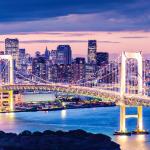
Tokyo
Popular in April
Shopping, Convenient Public Transport, Food
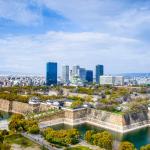
Osaka
Popular in April
Shopping, Local Food, Food
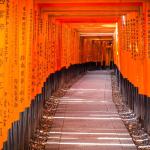
Kyoto
Popular in April
Temples, Culture, History
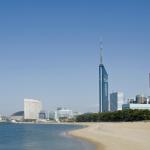
Fukuoka
Popular in December
Food, Shopping, Convenient Public Transport

Nagoya
Popular in April
Local Food, Food, Shopping
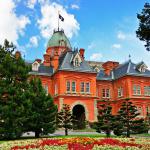
Sapporo
Popular in February
Food, City Walks, Sightseeing
Ready to book a trip to Japan?
Enter your dates to find the perfect place to stay in Japan!
What other travellers say about their holiday in Japan
-
Tsugaike Resort covers everything for skiers and snowboarders. It has the best beginner runs in Hakuba, intermediate skiers and riders are well catered for as well. Only a few advanced runs high up but just enough to take it all in. Remember Japanese black runs are real blacks.
Chikuni January 2025 -
We wish that we stayed on for longer. It is like a fairytale and when it snows, it's like time stands still. It's a good place for the soul. Peaceful and relaxing.
Vera Marie Beatrice Hakuba January 2025 -
Zao has a property alpine village, the mountain is great, very scenic. The snow quality is great due to the colder temperatures. The only thing we didnt like was the lift lines on the cable car or ropeway as they call it and the gondola to the top to see the snow monsters. The lift lines were 1-2hrs long due to all of the sightseers. They have a priority line and bus loads of people turn up after you have been waiting for an 1hr and go straight in front of you.
Adrian Zao January 2025 -
We took a trip from Nagano up to Jigokudani to see the snow monkeys and it was fabulous! I know you can stay closer to the park but staying in Nagano gave us a chance to look around the city while also being able to travel to the park quite easily to see the Monkeys.
Valma Nagano January 2025 -
Nice locations but the tozan buses were overcrowded and few. Hours change during weekends so be ready to wait one hour during mid afternoons. Taxi charges are crazy - we paid USD100 to get from Odawara to Lake Ashi.
Ee Hakone January 2025 -
If you're tired of Australians overwhelming Japan, then you'll need to give this a miss; it's another small beautiful Japanese town that's been lost to the Australian occupation! If you can handle that, or you are there in the off season, Nozawa Onsen is one of Japan's gems!
Nozawa Onsen January 2025
-
Tottori city is small but packed with experiences. I recommend: Warabekan - Toy Museum; Jinpukaku Mansion (closed until 2029 but still a beautiful place to visit); Tottori Castle Ruins (the park has great city views) and UNESCO Global Geopark - Tottori Sand Dunes. The crab dishes are delicious!
Ana-Maria Tottori February 2025 -
still some work needed in working things out, most things had english translations, and working out where to eat was pit of problem.
Hakuba February 2025 -
4 days required if you want to enjoy Kyoto, as you have plenty of different options depending your preferences.
Kyoto February 2025 -
A great village, with lots of great restaurant options, for all budgets. Very picturesque, within easy reach of the mountains, with the added benefit of some great local onsens, for the perfect recovery at the end of a full days skiing.
Hakuba February 2025 -
It's such a calming and beautiful place, even if I came here for a national holiday, there weren't many people and tourists. The parks and gardens were so pretty even covered in snow and the FOOD WAS ABSOLUTELY AMAZING. Every place was an absolute experience and almost everywhere they add a little bit of gold to each dishes, everyone was kind, generous and overall so welcoming~ I loved it here I hope to have a chance to get back soon♡
Gaia Kanazawa February 2025
-
Osaka is a great city. Especially the Doutonbori area is just unbelievable with so much energy and some great food. You should try the Doutonbori Gyozas without fail. We visited Osaka Castle, Umeda Sky building and a few shrines and had a lovely time in Osaka. The Tsunekaku area in shinsekai was good too.
Harish Osaka March 2024 -
Loved the Machiya area - samurai and ninja and geisha history, hidden alleys and other old homes
Robyn Kanazawa March 2024 -
I like that we can easily reach our destinations by taking the train. However it might be a bit difficult to locate the exact exit to exit. Food is great all the time.
Tokyo March 2024 -
The station is super as is the gardens and castle. The market is excellent and opens at 9am, there are two tourist buses but it’s a pretty walkable town
Jillian Kanazawa March 2024 -
Beppu is a nice town in a very interesting area. I arrived there by ferry from Osaka, which is itself a great trip.
Beppu March 2024 -
This hotel is the perfect location if travelling on to another area in Japan. It is fantastic for a "stop over" sleep. Next visit we will stay a little longer and explore the hotel a bit better. Staff were fantastic and the free shuttle from the airport is fantastic as well.
Fern Narita March 2024
-
Highly recommended if traveller likes the followings: Food, culture, shopping, nature, efficient transport, gardens, temples, hospitality, good living
Kok Chan Kyoto April 2024 -
So easy to get around Osaka, everyone is so friendly & helpful. No problems getting train/metro tickets at the stations as there is an English page on all the machines where you purchase your train/metro tickets & very easy to use. Favourite places that we visited: Kyoto, Osaka Castle, Shitenno-ji-Temple, Sumiyoshi, Dotonbori canal to name but a few
Rose Osaka April 2024 -
Beautiful city. Unfortunately it became so crowded & touristy.
Kyoto April 2024 -
I always love less touristy, peaceful, safe & clean places. Nakatsugawa is definitely in that category.
Diah Nakatsugawa April 2024 -
Tokyo is the one of the best cities in the world for culture, shopping and food. It is safe and clean and the service is always courteous and exceptional. Some of our favourite places are not the main tourist sights but the surrounding neighbourhoods which gives us a taste of real life in Tokyo. With a Pasmo card it is easier to get around on Tokyo's complicated train system.
Tokyo April 2024 -
A wonderful, beautiful, calm city. I want to come here again and again.
Svetlana Numazu April 2024
-
The hotel location was very convinient and nice restaurants, cafe, and park nearby Oasis 21. From Nagoya station, take the Number11 bus from the city bus terminal. You can pay as you get on the bus. Highly recommend you get a One day unlimited pass it is only 500 yen. This special sight seeing bus will take you to all the places like Toyota museum, Nagoya castle, and many other amazing places.
GLEN Nagoya May 2024 -
You should stay more than 1 night in Hiroshima, atleast 2 days, better 3 days. So you have enough time to explore everything. Compared to other cities, hiroshima is way more modern and is less traditionalthan kyoto for example. But thaths why it is so nice to see, it is different than other locations in Japan.
Sterner Hiroshima May 2024 -
Great city to visit, shopping is fantastic and not as busy as Tokyo. Plenty to do. We used the train network, the train network is both beyond great and easy to use if you live there, (meaning) we were a group of six and have travelled many times in the past and in Japan the rail took lots of effort to understand the complexity on that large scale, some of the smallest of stations are the size of melbournes main station, the stations are so big, a simple mistake is a lot of wasted time.
Pasquale Osaka May 2024 -
A great place to visit. Mount fuji, the surrounding lakes, temples and shrines, great restaurants and Fuji Q Highland. Plenty to do for a 2 or 3 night stay. Probably best to rent a car.
Neil Fujiyoshida May 2024 -
The apartment is spacious and the location is superb.
Hakodate May 2024 -
Exciting vibrant city. Bit expensive compared to other cities we have stayed in. Bit less clean too. Bit less well mannered
helen Osaka May 2024
-
visited japan many times including tokyo. what i like most is the food and shopping, good public transport, japanese people are generally very courteous and helpful. based on my experience it is very clean and safe place to visit.
Tokyo June 2024 -
Rich in history and food. Lots to see and in and around the city. Excellent alternative to Tokyo while connected with many transportation options.
James Sendai June 2024 -
Ito is a little too far out from central Hakone and Gotemba. But very scenic and breath-taking sea views! Rent a car if visiting Ito.
Ito June 2024 -
Love the vibes of Kyoto! We rented kimonos and walked around the old streets of Kyoto in them - lovely experience!
Kyoto June 2024 -
Very busy place compared to the rest of Japan. Lots of good ramen eateries in Tokyo, we enjoyed all.
Tokyo June 2024 -
Great for some sightseeing, shopping and Universal Studios!
Osaka June 2024
-
Uno Port Inn is perfectly located for the train, the ferry and restaurants. The staff are just wonderful. They speak Japanese, Vietnamese and English. They make this cool little inn so special.
Charyn Tamano July 2024 -
There is so much to see, lots of walking, and great food and cafés scattered all over the town. Avoid the hot summer months and the rainy season. Many sights are overwhelmed by tourists, but many other sights or temples that are harder to get there are fewer people. If you take a bus or metro, I highly recommend the Suica pre paid smart card.
Kaya Kyoto July 2024 -
Had an amazing experience staying here, very clean and appealing rooms with an amazing bathroom. Would heavily recommend to stay here on your Kyoto trip. 😁☺️
samreen Kyoto July 2024 -
Osaka is great for shopping and of course a visit to Universal Studios. We also did day trips from Osaka to Nara and Kobe.
Osaka July 2024 -
There is so much to see in beautiful Kyoto, we would have loved to stay longer.
Heike Kyoto July 2024 -
Beautiful city with great history and culture. Excellent connectivity.
Saif Osaka July 2024
-
Room is huge, clean & staff are friendly. Breakfast is excellent & wide dining area. Location is safe to all traveller's cause its near the airport & frèe limousine bus service to hotel & airport. Excellent service of all the staff.
Manlapaz Narita August 2024 -
The firework show at night was magnificent. The raining did not bother me at all.
mitsuko Lake Toya August 2024 -
This place is amazing. The food, the culture. Easy access to everything. You would love to walk and walk because the air is not totally polluted. And the food is absolutely delicious!
Nagoya August 2024 -
very clean city , amazing culture , very cheap to eat and drink , lots and lots of shops to explore , and so many sightseeing options
Jad Tokyo August 2024 -
A lively place - all day long. By underground one can go to every corner of Tokyo easily......
Tokyo August 2024 -
You do not need many days in Osaka, but I would stay at least 3 full days. This way we could have time to walk around the areas with more time to book the cafes and shopping.
Maria Osaka August 2024
-
Loved Tokyo. It is overwhelming for choice. Avoid tourist trap eateries around busy areas as often expensive and poor food but there are great places to eat in quiet suburbs. Enjoyed just wandering around and looking at sights. Adored the Asakura Museum of Sculpture!
Tokyo September 2024 -
Variety choices of good delicious food and fantastic weather. People are friendly and helpful. Transportation is convenient and weekend pass (Donichika) is much appreciated. A wonderful place for holiday.
Wei Shane Sapporo September 2024 -
Tokyo is vast and crazy and wonderful. I love the different characters of the various areas, the food, the incredible transport network, the beautiful shops, and the gracious people.
Eldene Tokyo September 2024 -
Amazing islands set on the edge of Okinawa. We have travelled all over Asia and the pacific and these are among the best islands we have seen
Robert Zamami September 2024 -
An stressed City full of beautiful surprises to anyone willing to go beyond the neon lights...
Tokyo September 2024 -
A nice walkable city full of Universal lessons and history... a non missed in Japan
Hiroshima September 2024
-
Yokohama is a wonderful city with being next to the water it creates a very different vibe. Lots to do here and could have stayed another couple of days. The harbour area has so many options with things to do and see. The walking area around the bay is very good so well set out. Chinatown is great and there's plenty of traditional Japanese eating options to.
Tony Yokohama October 2024 -
This was an incredible city. The public transport was exceptionally good. There are a lot of things to see and explore.
Tokyo October 2024 -
Nikko is a great town to spend a couple of nights exploring a calm and beautiful area in Japan. It is a quiet town, where you exolore during the day and relax in the onsen at night. The town is walkable and there are buses to go to the montain and lake. Many hikes and temples available. The Nikko pass is great for the train to and from Tokyo and all the buses in town. The food in Nikko is fantastic, you will find many different ways to eat Yuba, the tofu skin, in all the town restaurants.
Laura Nikko October 2024 -
A quieter version of Tokyo with its on sensibilities. Better food at a more affordable pricing. Can’t go wrong to vist
Osaka October 2024 -
A must try before die bucket lister. Too many tourists now but still worth the visit
Tokyo October 2024
-
The location by Tokyo tower is amazing! It was close to the subway and so convenient to get to other parts of Tokyo. I would definitely recommend this location especially when travelling with little ones.
Amy Tokyo November 2024 -
The castle grounds were beautiful and the whole city has so much just in walking distance to fill your day.
Andrew Kanazawa November 2024 -
Transfer and ticketing is quite difficult for the few times.
Hernandez Osaka November 2024 -
We had send our luggage through Takkyubin from Kyoto. They were collected and nicely placed in their store. Staff informed us once they received the luggage well in time. Also, there is a 7-Eleven downstairs in the hotel premises, which is very convenient. We used the free shuttle service to and from airport.
Karmarkar Narita November 2024 -
Fukuoka is a great city for food, shopping and all. Really am happiest whenever I come to Japan.
Fukuoka November 2024 -
The open air Museum is worth a visit and the view of Fuji from Mt Taikan is spectacular on a clear day.
Ashley Hakone November 2024
-
Loved our stay in Osaka, the city is vibrant and busy with a great atmosphere and a lot of things to do. The metro system made it very easy to get around. The people were friendly and welcoming.
Osaka December 2024 -
It is the world's largets city, yet a wonderfully organised space to travel and experience.
Lapitha Tokyo December 2024 -
I always visit Kawasaki Daishi whenever I stay in or come close to Kawasaki. What I like the most about the place is the small, short street full of traditional shops with local specialities (sweets, foods, candies, etc.).
TAKEMI Kawasaki December 2024 -
It may be the most photographed torii gate in Japan but Miyajima is so much more. Our host advised us to hike the mountain and it was challenging and beautiful, hard work but worthwhile. We made it to the top of Mount Misen then hiked down to catch the torii at high tide. another day to explore the splendid temples would make it truely memorable,
Jennifer Miyajima December 2024 -
It’s a picturesque place. Love the vibe and the pace is more relaxing.
Nagasaki December 2024 -
The city can be explored within a day or two, and additional day to go to Miyajima other than that, nothing much to explore. People are friendly and Oysters are superb! So worth visiting.
Vanessa Hiroshima December 2024
More inspiration for your Japan trip
-

Sushi, hot pots and street treats in Tokyo
12 unmissable foods you should seek out in the Japanese capital
-

Destination inspiration: Yufu, Japan
Fresh air and even fresher water in the Japanese countryside.
-
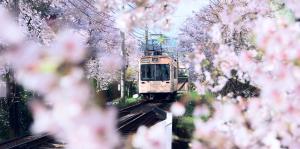
Top places in Japan to see cherry blossom
For picture-perfect pink scenes and picnics, head to Japan for sakura season.
-

Top 10 hotels with the best WiFi in Tokyo
The high-tech futuristic capital where good WiFi is a number one priority.
-

Hakuba’s coolest ski resorts
Carving up 4 of the best ski spots in this one-time Winter Olympic valley.
-
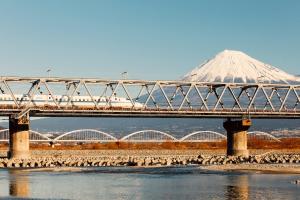
Great rail journeys: the Tōkaidō Shinkansen
Whipping you from the hectic neon of Tokyo to the zen of Kyoto’s temples in record time.
-

Destination Inspiration: Chiba, Japan
Shop ‘til you drop, go meet Mickey, or head to the hills in Chiba.
-
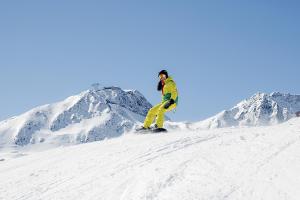
The world’s best snowboarding destinations
Slopes where newbies and old hands can safely snowboard together.
-

Destination Inspiration: Takayama, Japan
Unwind in rural Japan, one bubbling hot spring at a time.
-
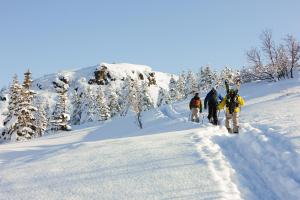
The 6 best ski resorts in Japan
Impeccable snow, hot springs and delectable Japanese food awaits.
-
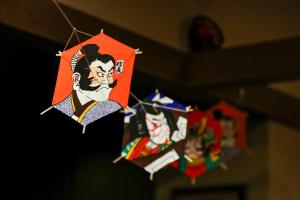
Tokyo’s 6 best overlooked museums
Museums worth a 2nd, 3rd, 4th and 5th look.
-
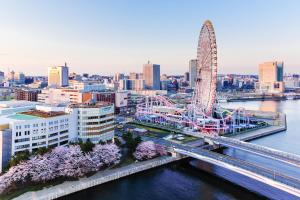
Destination Inspiration: Yokohama, Japan
A relaxing break in Japan’s second largest city.
-

Discover Ōkunoshima, Japan’s rabbit island
It may be dubbed 'rabbit island', but there's more to this island than just rabbits.
-

What to read and watch before visiting Tokyo
Whimsical novellas, gritty film noir, dystopias and dreams of sushi.
-
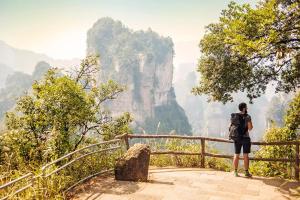
Limitless Travel
Easily unlock new places and experiences…
-
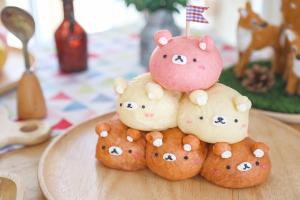
A kawaii tour of Tokyo
The best Tokyo spots to revel in all things kawaii (best translated as 'cuteness').
-
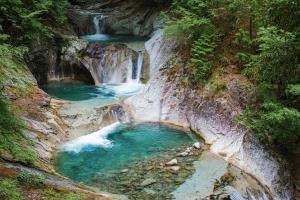
The best of Japan’s natural beauty
Visit valleys glowing crimson with autumn maple trees, and spot rare red-crowned cranes.
-

7 strange and spectacular Japanese islands
Including one home to hundreds of cats and a completely abandoned island.
-
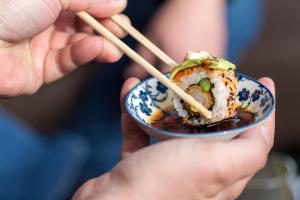
Japan's best cities for sushi
Catch your own squid for fresh sashimi or indulge in expertly prepared omakase.
-

Japan’s 7 best beaches
Take a break from Tokyo and head to a beach in Japan, Asia’s unexpected tropical paradise.
-
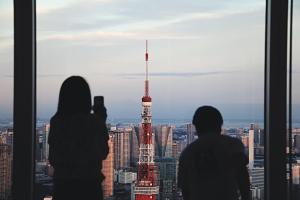
A cultural guide to Tokyo
Cultural inspiration for every type of trip to Tokyo; from fish markets to Studio Ghibli.
-

7 stunning places to see spring flowers in Japan
From pink moss fields at the foot of Mount Fuji to an amazing 160-year-old wisteria tree.






